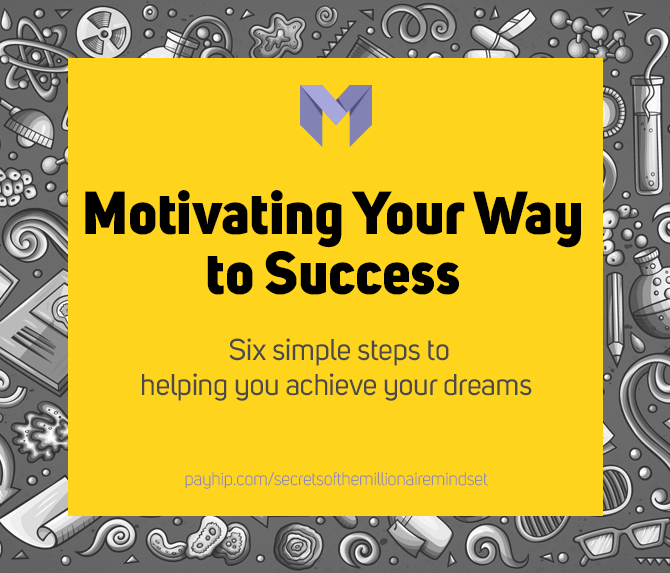
In today's fiercely competitive business environment, startups face the daunting challenge of not only surviving but thriving among industry giants. Traditional marketing methods often fall short when resources are limited, and the need for rapid growth is paramount. Enter growth hacking a mindset and a collection of strategies designed to achieve explosive growth quickly and efficiently. If you're a startup founder or part of a budding enterprise looking to scale rapidly, this comprehensive guide will unveil the top seven growth hacking strategies to catapult your business to new heights.
Understanding Growth Hacking
Before diving into the strategies, it's crucial to grasp what growth hacking truly entails. Coined by Sean Ellis in 2010, growth hacking merges marketing, data analysis, and product development to drive significant growth with minimal resources. It's about finding creative, low-cost alternatives to traditional marketing by using data-driven methodologies to identify the most effective ways to grow a business. Growth hacking isn't just a set of tactics; it's a mindset that prioritizes rapid experimentation across various channels and product development facets to identify the most efficient paths to growth. This approach is particularly beneficial for startups that need to make a significant impact without the hefty budgets that larger companies wield.
The Importance of a Growth Mindset
Adopting a growth mindset is the first step toward successful growth hacking. This involves being open to experimentation, learning from failures, and continuously iterating on strategies. Startups with a growth mindset focus on scalable growth, customer-centric approaches, and agile methodologies. They prioritize learning and adaptability over rigid planning, allowing them to pivot quickly in response to market feedback. This mindset sets the foundation for implementing the following growth hacking strategies effectively.
1. Optimize Your Product for Virality
One of the most powerful growth hacking strategies is creating a product that markets itself a product with built-in virality. This doesn't necessarily mean your product has to become an overnight sensation on social media, but it should encourage users to share it naturally. By incentivizing sharing and making social integration seamless, you can turn your users into brand advocates.
For instance, incorporating features that reward users for referring others can lead to exponential growth. Dropbox famously did this by offering extra storage space for each referral, significantly expanding its user base. Designing your product so that its value increases as more people use it can also encourage users to invite others, leveraging the power of network effects. When users become advocates, your customer base grows organically without significant marketing spend, capitalizing on the trust people place in peer recommendations over traditional advertisements.
2. Leverage Content Marketing and SEO
Content marketing combined with search engine optimization (SEO) is a cost-effective strategy to attract and retain a clearly defined audience. By creating valuable, relevant content, you establish your startup as an authority in your industry, driving organic traffic to your website. High-quality content attracts visitors, builds trust, and encourages engagement, leading to a steady stream of qualified leads over time.
To implement this strategy, focus on developing blog posts, whitepapers, ebooks, and videos that address the pain points of your target audience. Conduct thorough keyword research to understand what potential customers are searching for and optimize your content accordingly. Earning backlinks from reputable websites will improve your search engine rankings, enhancing visibility. This approach not only boosts your online presence but also positions your startup as a thought leader in your field.
3. Harness the Power of Social Media
Social media platforms offer fertile ground for growth hacking due to their massive user bases and sharing capabilities. They provide an avenue to reach a large audience with minimal cost, especially if your content resonates and is shared widely. By creating engaging content and building a community around your brand, you can amplify your reach and foster brand loyalty.
Focus on platforms where your target audience is most active, whether it's Instagram, LinkedIn, Twitter, or TikTok. Develop shareable content that resonates with your audience content that is informative, entertaining, or emotionally compelling. Engage with your followers by responding to comments, participating in discussions, and encouraging user-generated content. This direct interaction fosters relationships and can turn followers into loyal customers who advocate for your brand.
4. Implement A/B Testing and Data Analytics
Data-driven decision-making lies at the heart of growth hacking. A/B testing involves comparing two versions of a webpage, email, or advertisement to determine which performs better. Coupled with robust data analytics, it allows you to optimize every aspect of the customer journey. By removing guesswork, you rely on empirical evidence to guide your strategies, leading to higher conversion rates and more efficient use of resources.
To effectively utilize this strategy, identify variables within your marketing materials or website that you want to test, such as headlines, call-to-action buttons, or images. Use testing tools like Google Optimize, Optimizely, or VWO to conduct your experiments. Analyze user interactions meticulously and continuously refine your strategies based on the results. This iterative process ensures that you're always moving toward greater efficiency and effectiveness in your growth efforts.
5. Utilize Email Marketing and Automation
Despite being one of the oldest digital marketing channels, email remains a highly effective tool for nurturing leads and encouraging repeat business. Automation enhances this by sending targeted messages at optimal times without manual intervention. By personalizing communication and delivering value directly to your audience's inbox, you keep your startup top-of-mind for potential and existing customers.
Begin by building an email list through offering valuable content in exchange for contact information, such as a free ebook or access to exclusive insights. Segment your email list based on behavior, demographics, or stage in the buyer's journey to ensure that your messages are relevant and personalized. Utilize email marketing platforms to automate campaigns like welcome series, abandoned cart reminders, or re-engagement initiatives. This approach increases engagement and conversion rates by delivering the right message to the right person at the right time.
6. Form Strategic Partnerships and Collaborations
Collaborating with other businesses or influencers can provide access to a broader audience and add credibility to your startup. Partnerships can take various forms, such as co-marketing campaigns, affiliate programs, or product integrations. By leveraging another entity's audience and reputation, you can accelerate growth without the need to build that audience from scratch.
Identify potential partners whose audience aligns with yours but who aren't direct competitors. Approach these partnerships with a clear value proposition that benefits both parties. Execute joint initiatives like webinars, guest blog posts, or bundled offerings to maximize the impact. Such collaborations expand your reach quickly and can enhance your brand's reputation by association with established entities.
7. Create an Exceptional User Experience
A seamless and enjoyable user experience (UX) can turn customers into loyal advocates. UX encompasses all aspects of the end-user's interaction with your company, its services, and its products. An outstanding UX reduces churn rates and increases customer satisfaction, making users more likely to recommend your product to others, thus fueling organic growth.
To achieve this, simplify the onboarding process to make it easy for new users to understand and start using your product. Regularly gather user feedback to identify pain points and areas for improvement. Use insights from analytics and direct feedback to refine your product continually. Prioritizing UX ensures that your customers have a positive experience at every touchpoint, which is crucial for building a strong, loyal customer base.
Integrating the Strategies for Maximum Impact
While each of these strategies can be effective on its own, integrating them can lead to exponential growth. For instance, combining your social media efforts with content marketing can amplify your reach, while data analytics can inform and enhance all other strategies. Developing a cohesive plan that aligns all growth hacking activities with your overall business objectives ensures that resources are allocated wisely and efforts are synergistic.
Maintain flexibility within your strategy to allow for quick pivots in response to performance data and market feedback. By integrating these strategies thoughtfully, you create a robust growth engine that propels your startup forward efficiently.
Measuring Success and Iterating
Growth hacking is an iterative process. Establishing key performance indicators (KPIs) is essential for measuring the effectiveness of your strategies. Common KPIs include customer acquisition cost (CAC), lifetime value (LTV), conversion rates, and churn rates. Set clear metrics to define what success looks like for each strategy and utilize dashboards and reports to monitor progress regularly.
Be willing to adjust or abandon strategies that aren't delivering the desired results. Continuous measurement and iteration ensure that your growth efforts remain effective and aligned with your business goals.
The Role of Company Culture in Growth Hacking
A culture that supports experimentation and tolerates failure is crucial for growth hacking. Encourage your team to think creatively, take calculated risks, and share learnings openly. Leadership should endorse and participate in growth hacking efforts, fostering an environment where innovation is valued and rewarded.
Open communication channels allow team members to share ideas and feedback, enhancing collaboration. Recognizing and rewarding team members who contribute valuable insights or successful strategies reinforces a culture that embraces growth hacking principles.
Potential Pitfalls and How to Avoid Them
While growth hacking offers significant advantages, it's not without risks. Common pitfalls include over-reliance on short-term tactics, neglecting product quality, or misaligning with brand values. To avoid these mistakes, balance short-term wins with a long-term vision to ensure that quick growth doesn't compromise sustainability.
Never sacrifice product quality for the sake of rapid expansion, as this can lead to customer dissatisfaction and damage your brand reputation. Ensure that all growth efforts align with your company's mission and values to maintain brand integrity.
Conclusion
Unlocking rapid business growth through growth hacking strategies is both an art and a science. By optimizing for virality, leveraging content marketing, harnessing social media, utilizing data analytics, engaging in email marketing, forming strategic partnerships, and prioritizing exceptional user experience, your startup can achieve remarkable growth without the need for massive budgets.
Remember that growth hacking requires a mindset of continuous learning and adaptation. Stay agile, keep experimenting, and don't be afraid to pivot when necessary. With persistence and the right strategies in place, your startup can not only compete with but outperform established players in your industry.
Call to Action
Are you ready to take your startup to the next level? Start implementing these growth hacking strategies today and witness the transformative impact on your business. Share your experiences or ask questions in the contact form let's ignite a conversation that fuels success for startups everywhere.




















